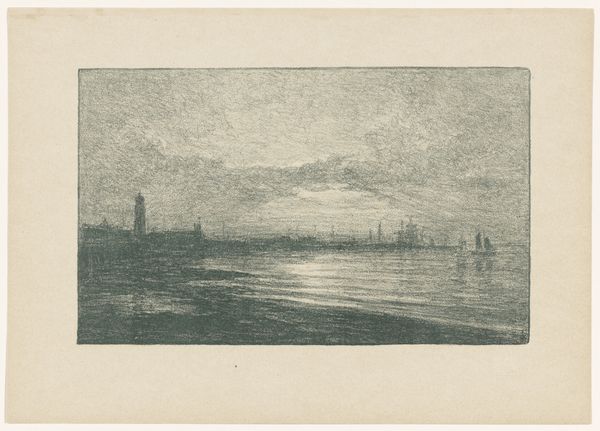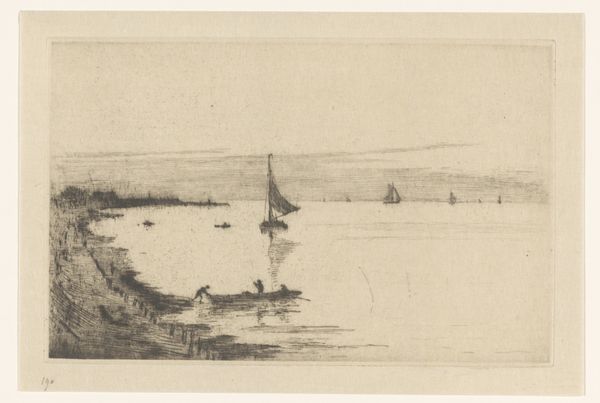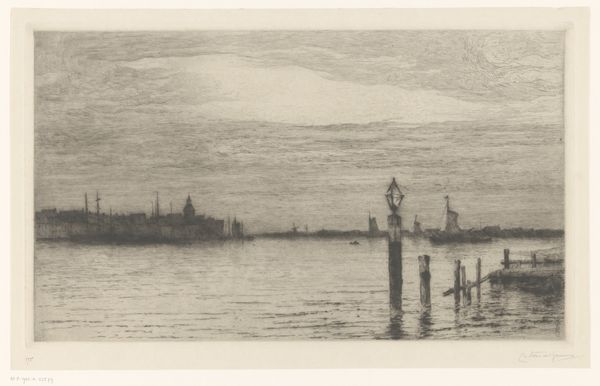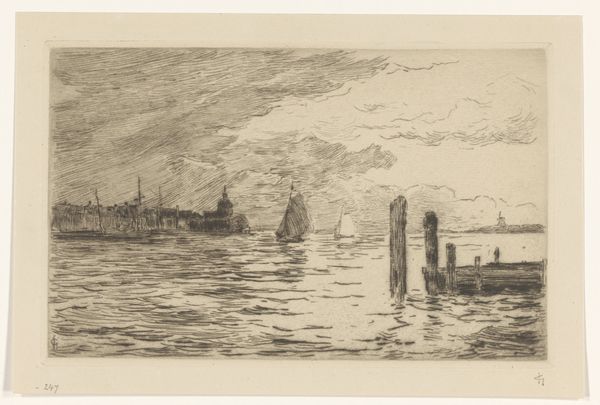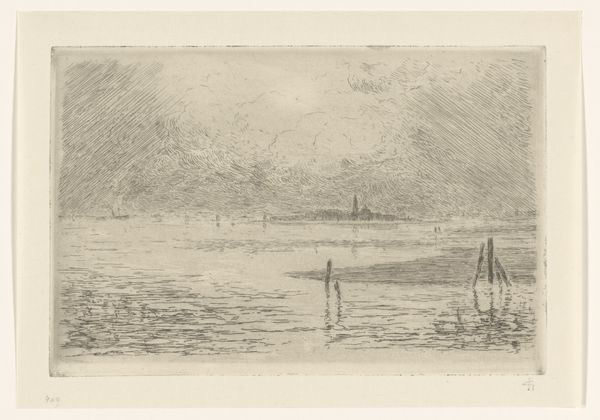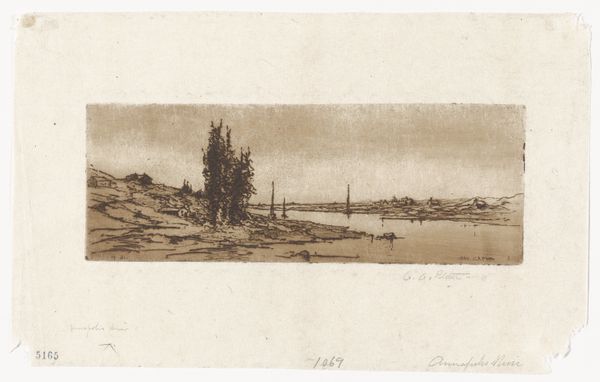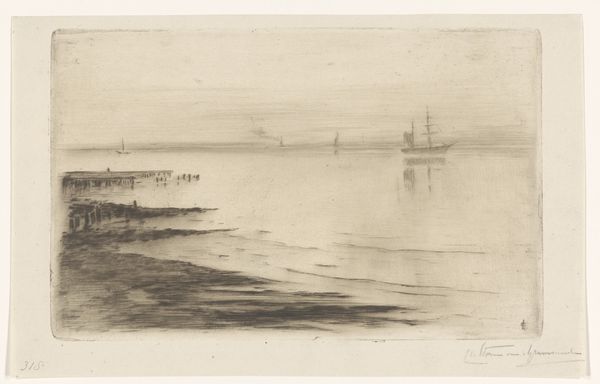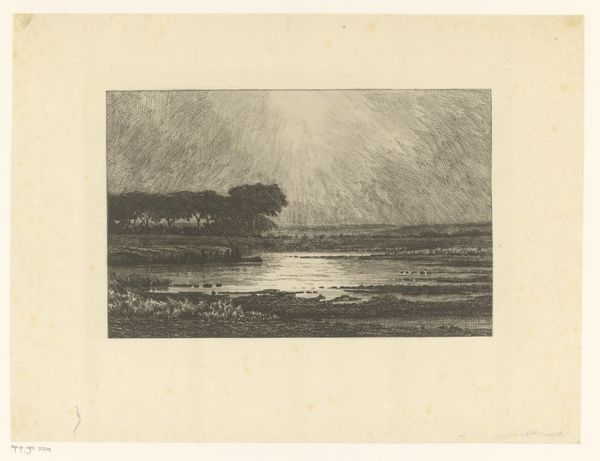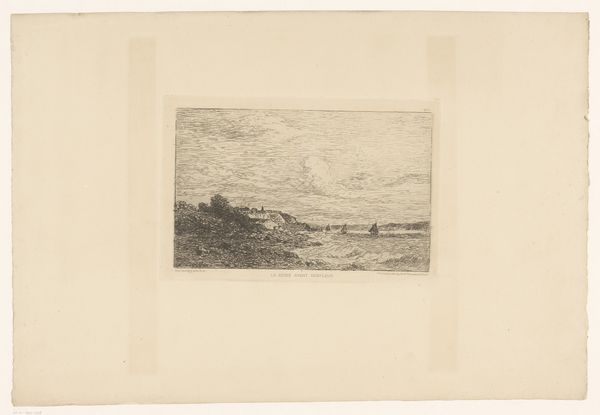
drawing, pencil
#
drawing
#
landscape
#
pencil drawing
#
pencil
#
cityscape
#
realism
Dimensions: height 160 mm, width 247 mm
Copyright: Rijks Museum: Open Domain
Editor: Here we have Carel Nicolaas Storm van 's-Gravesande's "Zeehaven bij avond," or "Seaport at Evening," done sometime between 1851 and 1902. It’s a pencil drawing, and there’s something incredibly still and peaceful about it, even melancholic. What captures your eye when you look at it? Curator: Oh, that's beautifully put. "Melancholy" gets at the heart of it, I think. For me, it’s the shimmering light on the water that does it. Notice how van 's-Gravesande uses such simple means, just pencil strokes, to evoke that sensation of a twilight glow? It's as if he's captured a fleeting moment, a whisper of light before darkness truly descends. Does it perhaps also speak of impermanence? Editor: Yes, absolutely! The light feels so fragile. So, this is a realistic style. But how much is the artist trying to capture what’s there versus communicating his feeling? Curator: A crucial question! I believe it’s both intertwined. Realism, especially in drawings like this, isn’t about photographic accuracy. It’s about capturing an *impression* of reality, filtered through the artist's emotions. Van 's-Gravesande isn't just depicting a seaport; he's giving us his subjective experience of it, that moment of twilight, which, as you noticed, hints at the melancholy nature of beauty. Editor: It’s like he’s not just showing us the harbor, but inviting us to feel the quiet solitude of that evening. I see it differently now. Thanks! Curator: Exactly! It's those whispers that art speaks in, that make it truly unforgettable, isn't it? And who knows what memories that view holds for you or might evoke as well?
Comments
No comments
Be the first to comment and join the conversation on the ultimate creative platform.
